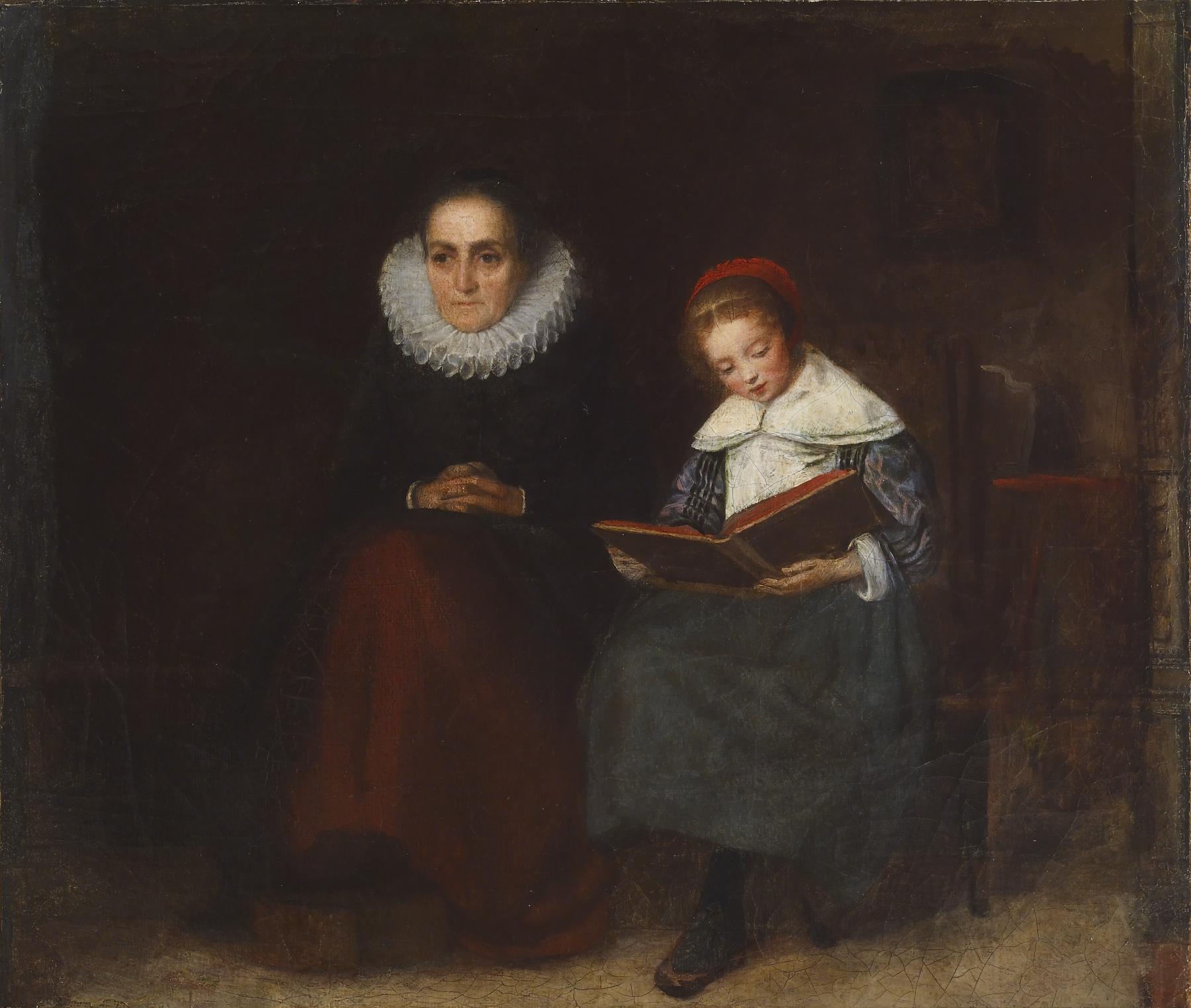Old Woman and Child Reading a Book
(18th and 19th Centuries )
In this scene of quiet domesticity, an old woman sits with her feet propped on a hassock, looking pensively into the distance. The young girl at her side reads from a large book. Such details of costume as the woman's lace ruff and the girl's unfinished carved chair place this in the seventeenth-century period context that was prized by American collectors and fashionable among Düsseldorf artists in the period before the American Civil War. The relationship between generations that is a recurrent theme in Woodville's work is treated here as contented coexistence.
One of the defining social transformations underway in the early decades of the nineteenth century was the physical separation of male employment from the home, as industry became more concentrated and the population grew more urban. The developing middle class coped with the rigors and anxieties of this new economic structure in part by imbuing the home with deep associations of private refuge. The "separation of spheres" by gender placed women at the center of domestic life, where their role, according to a contemporary etiquette book, was to be "a corrective of what is wrong, a moderator of what is unruly, a restraint on what is indecorous." Many of Woodville's genre works are set in the rough-and-tumble public sphere of primarily male interaction, and exude a sense of anxiety about the ambiguous relations between strangers in anonymous public spaces. In this painting, which descended in the family of his second marriage, he turned from the unruly and indecorous external world to the calm and quiet of the home. The fact that the two subsequent generations of that family were accomplished artists may account for the inconsistencies of paint application in this unfinished work.
Provenance
Provenance (from the French provenir, 'to come from/forth') is the chronology of the ownership, custody, or location of a historical object. Learn more about provenance at the Walters.
Antoinette Schnitzler [wife of the artist] [date and mode of acquisition unknown]; Richard Caton Woodville II [son of the artist] [date and mode of acquistion unknown]; William Passenham Woodville [date of acquisition unknown], by descent; Elizabeth Caton Woodville Callender, Bridgetown, Nova Scotia, [date of acquisition unknown], by descent; Walters Art Museum, 2011, by purchase.
Exhibitions
| 2013 | New Eyes on America: The Genius of Richard Caton Woodville. The Walters Art Museum, Baltimore; Mint Museum of Art Uptown, Charlotte. |
| 1967-1968 | Richard Caton Woodville. Corcoran Gallery of Art, Washington; The Walters Art Gallery, Baltimore; Munson-Williams-Proctor Arts Institute- Museum of Art, Utica; High Museum of Art, Atlanta; Brooklyn Museum, Brooklyn. |
Geographies
Germany, Düsseldorf (Place of Origin)
Measurements
H: 11 15/16 x W: 14 in. (30.4 x 35.6 cm); Framed: H: 21 1/4 x W: 23 1/4 x D: 2 9/16 in. (54 x 59 x 6.5 cm)
Credit Line
Museum purchase with funds provided through the bequest of Laura Delano Eastman by exchange, 2011
Location in Museum
Hackerman House at 1 West Mount Vernon Place: First Floor: Library
Accession Number
In libraries, galleries, museums, and archives, an accession number is a unique identifier assigned to each object in the collection.
In libraries, galleries, museums, and archives, an accession number is a unique identifier assigned to each object in the collection.
37.2930


